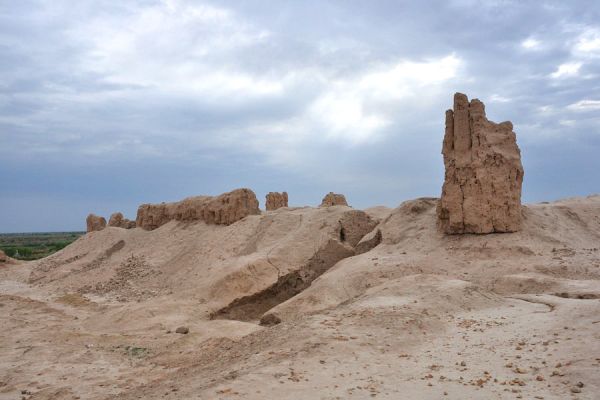The tomb of Dakhma-i-Shahan
As you know, there were 29 khans in the Kokand Khanate. Perhaps, the reign of only one of them, Umarkhan, was marked by peace and tranquility. Although he himself ascended to the throne in 1810 as a result of a palace coup, his aspirations were aimed at educating the people and improving the region. Calligraphers, artists, and poets were brought close to the khan's court. Umarkhan himself was quite a famous poet for his time. He signed his gazelles with the pseudonym Amiriy. He married the beautiful Mohlaroyim, the daughter of the ruler of Andijan. She possessed an extraordinary poetic gift, was known among her contemporaries and remained in the memory of her descendants as the outstanding Uzbek poet Nadira.
When Umarkhan unexpectedly died in 1822 and their young son Muhammad Ali became khan, Nadira devoted her life to poetry and piety. The construction of several Kokand mosques, madrassas and caravanserais is associated with her name. One of the most remarkable structures erected by order of Nadira was the tomb of Dakhma-i-Shahan, in which Umarkhan was buried. It was a complex architectural complex typical of the memorial architecture of the Ferghana Valley and was named khazira.
The ensemble consisted of an entrance room with a dome and a magnificent portal entrance. The portal is decorated with mosaic patterns made of glazed tiles, mostly blue and light blue. The same bright tiles covered the base of the dome. Special attention is drawn to the framing of the upper part of the portal, which resembles the Ferghana fabric for outerwear for snipe. The doors of the tomb are decorated with two-layer wood carvings, the pattern of which is interwoven with Arabic inscriptions from the Koran and verses of Umarakhan.
Behind a beautiful fence there are burials and a small ivan mosque-ziyarathona, in which memorial prayers were read. The entrance double-leaf door of the mosque is made of solid pieces of plane tree wood and is covered with carved floral ornaments, as well as two columns supporting the ceiling of the aivan. The name of the master who created this beautiful carving is known – Usto Muhammad Isa from Margilan. The ceiling and walls of the mosque were filled with ganch carvings and paintings by the famous master usto Muhammad Kuzi. The stone slabs under which Umarkhan, his brothers, sons and grandchildren lie are of artistic value. The tombstones are covered with carvings, delicate ornaments and sayings from the Koran, made in Arabic script.
Chalpak madrasah was built next to Dakhma-i-Shahan on Nadira's instructions. And around the memorial, she laid out flower beds and planted an orchard. For almost the entire 19th century, Dakhma-i-Shahan, which means "tombstone of the shahs," was the family tomb of the Kokand khans.















